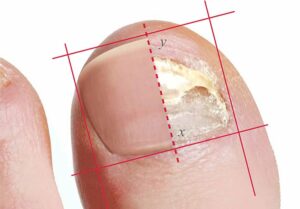When it comes to caring for our bodies, it’s all too easy to overlook the vital role our feet play. Every day, our feet bear the weight of our bodies and carry us through countless steps. It’s no surprise that foot problems are a common issue. Whether you’re grappling with an ankle injury, an ingrown toenail, or a more complex condition, finding the right foot doctor is paramount to preserving your foot health.
As a dedicated foot doctor at Vargas Foot and Ankle Specialists, I understand the significance of expert guidance and personalized treatment in relieving pain and enhancing mobility. With my experience and knowledge, I’m committed to diagnosing and treating a broad spectrum of foot conditions, helping you get back on your feet as swiftly as possible.
In this article, I’ll be your guide on how to locate the ideal foot doctor in your vicinity and provide essential considerations when making your selection. I’ll also emphasize the importance of regular foot care and preventive measures to sustain optimal foot health. Your journey toward foot health begins with finding the right foot doctor, and I’m here to assist you.
The Significance of Foot Health:
Our feet serve as the foundation of our bodies, making their health indispensable for our overall well-being. Sadly, many of us only pay attention to our feet when a problem surfaces. Recognizing the importance of foot health can help you prioritize proper care and seek professional assistance when necessary.
Healthy feet supply the essential support for our entire body, allowing us to stand, walk, and engage in various activities. Neglecting foot health can result in discomfort, pain, and mobility issues that can substantially affect our daily lives. By tending to our feet, we can prevent or minimize the risk of foot conditions such as plantar fasciitis, bunions, and heel spurs.
Regular foot care also plays a pivotal role in sustaining overall health. Our feet can serve as early indicators of underlying health issues such as diabetes, arthritis, and circulatory problems. By paying attention to any changes or abnormalities in our feet, we can detect and address these conditions promptly.
In summary, giving priority to foot health is essential for maintaining a pain-free and active lifestyle. By caring for our feet, we can prevent foot conditions, identify underlying health problems, and ensure optimal mobility.
Signs That Indicate a Visit to a Foot Doctor:
Understanding when to seek professional assistance from a foot doctor is crucial for addressing foot problems before they worsen. While some foot issues may resolve with proper self-care, certain signs clearly indicate the need for medical intervention.
Persistent Foot or Ankle Pain: If you experience continuous pain in your feet or ankles that lasts for more than a few days, it’s a clear signal to consult a foot doctor. Pain can be caused by various factors, including sprains, fractures, and nerve damage. A foot doctor can diagnose the underlying cause and recommend suitable treatment options.
Changes in Foot Appearance: If you observe any changes in the appearance of your feet, such as redness, swelling, or discoloration, it’s essential to consult a foot doctor. These symptoms may indicate an infection, inflammation, or a skin condition requiring medical attention.
Mobility Issues: Difficulty walking, standing, or exercising due to foot discomfort is another red flag that necessitates a visit to a foot doctor. Foot problems can significantly impact your mobility and quality of life, and a foot doctor can offer the necessary guidance and treatment to alleviate your symptoms.
In summary, if you encounter persistent pain, alterations in foot appearance, or difficulties in walking, it’s time to seek professional help from a foot doctor. Early intervention can prevent further complications and set you on the path to recovery.
What Is a Foot Doctor?
As a foot doctor, also known as a podiatrist, I am a healthcare professional who specializes in diagnosing, treating, and preventing foot and ankle conditions. I’ve undergone extensive training and education to acquire the knowledge and skills required to address a wide range of foot-related issues.
I hold a valid medical license and am well-equipped to perform medical procedures, prescribe medications, and offer expert advice on foot care. My expertise allows me to diagnose and treat various foot conditions, including sprains, fractures, infections, ingrown toenails, and deformities.
In addition to addressing acute foot problems, I am also dedicated to preventive care. I provide guidance on proper footwear, foot exercises, and lifestyle modifications to maintain optimal foot health.
As a foot doctor, I collaborate with various healthcare professionals, including orthopedic surgeons and physical therapists, to ensure comprehensive care for patients with complex foot conditions.
In summary, I am Dr. Vargas, a foot doctor with specialized expertise in diagnosing, treating, and preventing foot and ankle conditions. My role is pivotal in preserving foot health and overall well-being.
Types of Foot Doctors:
When you’re seeking a foot doctor, it’s important to understand the different types available and their areas of expertise. While all foot doctors are qualified to diagnose and treat foot conditions, some specialize in specific aspects of foot care:
Podiatrists: Podiatrists like myself are general foot doctors capable of diagnosing and treating a wide range of foot conditions. We are often the first point of contact for foot problems and can provide comprehensive care for various foot-related issues.
Orthopedic Foot and Ankle Surgeons: Orthopedic foot and ankle surgeons specialize in surgical interventions for foot and ankle conditions. They are trained in both conservative and surgical treatment options and can provide expertise in complex cases.
Sports Podiatrists: Sports podiatrists focus on foot and ankle conditions related to sports and physical activities. They are experienced in treating sports injuries, providing biomechanical assessments, and offering advice on sports-specific footwear and orthotics.
Pediatric Podiatrists: Pediatric podiatrists specialize in diagnosing and treating foot conditions in children. They have the knowledge and experience to address developmental issues, gait abnormalities, and congenital foot deformities in pediatric patients.
When choosing a foot doctor, consider your specific needs and the expertise required to address your foot condition. Consulting with a general foot doctor, such as myself, is often a good starting point, as we can provide appropriate referrals if necessary.
How to Find the Right Foot Doctor:
Locating the ideal foot doctor near you requires careful consideration and research. Here are key steps to help you find a reputable foot doctor who aligns with your needs:
Seek Referrals: Begin by asking for recommendations from your primary care physician, friends, family, or other healthcare professionals. Personal referrals can provide valuable insights into the quality of care provided by a foot doctor.
Verify Credentials: When evaluating a foot doctor, verify their credentials, including their education, training, and certifications. Look for foot doctors who are board-certified, as it indicates they have met stringent standards in their field.
Review Online Ratings: Online reviews and ratings offer additional information about a foot doctor’s reputation and patient experiences. Read reviews from multiple sources to obtain a well-rounded understanding of their practice.
Assess Experience: Consider the experience of the foot doctor, particularly in treating your specific foot condition. Inquire about their success rates and the number of similar cases they’ve managed in the past.
Consider Location and Accessibility: Choose a foot doctor with a convenient location, especially if you require frequent visits or have mobility limitations. Take into account factors such as parking availability, public transportation access, and office hours.
When selecting a foot doctor, it’s important to ask relevant questions to ensure they are the right fit for your needs. Here are some important questions to consider:
1. What is your experience in treating my specific foot condition?: Inquire about the foot doctor’s expertise and success rates in treating your particular foot problem.
2. What treatment options do you offer?: Ask about the range of treatment options available, including both conservative and surgical approaches. Understand the pros and cons of each method to make an informed decision.
3. What is the expected recovery time?: Discuss the recovery process and the estimated timeframe for returning to your normal activities. Understanding the recovery expectations can help you plan accordingly.
4. What can I do to prevent future foot problems?: Seek advice on preventative measures and foot care practices to maintain good foot health and minimize the risk of future issues.
5. Do you accept my insurance plan?: Ensure that the foot doctor accepts your insurance plan or offers affordable payment options. Clarify any financial concerns to avoid unexpected expenses.
6. Can you provide patient testimonials or references?: Request testimonials or references from previous patients to gain insights into their experiences and outcomes.
Asking these questions will help you gather relevant information and make an informed decision when choosing a foot doctor. Remember, it’s important to feel comfortable and confident in your chosen foot doctor’s abilities.
What to expect during your first visit to a foot doctor
Your first visit to a foot doctor is an important step towards addressing your foot concerns. Here’s what you can expect during your initial appointment:
1. Medical History: The foot doctor will review your medical history, including any previous foot injuries, surgeries, or existing medical conditions. They will also ask about your current symptoms and concerns.
2. Physical Examination: The foot doctor will conduct a thorough physical examination of your feet and ankles. They may assess your range of motion, strength, and flexibility. This examination helps them identify any visible abnormalities or signs of potential foot conditions.
3. Diagnostic Tests: Depending on your symptoms and condition, the foot doctor may order diagnostic tests, such as X-rays, MRI scans, or blood tests. These tests provide a more detailed understanding of the underlying cause of your foot problem.
4. Diagnosis and Treatment Plan: After evaluating your medical history, physical examination, and diagnostic test results, the foot doctor will provide a diagnosis and discuss appropriate treatment options. They will explain the benefits, risks, and expected outcomes of each treatment approach.
5. Education and Follow-up: The foot doctor will educate you about your foot condition, including its causes, progression, and preventive measures. They will also provide instructions on at-home care, exercises, and follow-up appointments.
Remember to communicate openly with your foot doctor, ask any questions you may have, and actively participate in your treatment plan. Building a good rapport and maintaining regular follow-up visits will help ensure the best possible outcome for your foot health.
Common foot conditions treated by foot doctors
Foot doctors are skilled in diagnosing and treating a wide range of foot conditions. Some of the most common foot problems treated by foot doctors include:
1. Plantar Fasciitis: Plantar fasciitis is characterized by inflammation of the plantar fascia, a band of tissue connecting the heel to the toes. It causes heel pain and stiffness, particularly in the morning or after prolonged periods of rest.
2. Bunions: Bunions are bony bumps that form at the base of the big toe. They result from the misalignment of the joint and can cause pain, swelling, and difficulty wearing certain shoes.
3. Ingrown Toenails: Ingrown toenails occur when the edge of a toenail grows into the surrounding skin. They can cause pain, redness, and infection if left untreated.
4. Heel Spurs: Heel spurs are bony growths that develop on the underside of the heel bone. They can cause sharp pain and discomfort, particularly when walking or standing.
5. Achilles Tendonitis: Achilles tendonitis is inflammation of the Achilles tendon, which connects the calf muscles to the heel bone. It causes pain and stiffness in the back of the heel, often due to overuse or repetitive strain.
6. Athlete’s Foot: Athlete’s foot is a fungal infection that affects the skin between the toes. It causes itching, redness, and peeling of the skin.
These are just a few examples of the many foot conditions that foot doctors can diagnose and treat. Whether you’re dealing with a common foot problem or a more complex issue, consulting a foot doctor is essential for appropriate diagnosis and treatment.
Foot care tips for maintaining good foot health
In addition to seeking professional help, practicing good foot care is essential for maintaining optimal foot health. Here are some foot care tips to incorporate into your daily routine:
1. Wash and Dry: Wash your feet daily with warm water and mild soap. Be sure to dry them thoroughly, especially between the toes, to prevent fungal infections.
2. Moisturize: Apply a moisturizing cream or lotion to keep the skin on your feet soft and hydrated. Avoid applying lotion between the toes, as excessive moisture can promote fungal growth.
3. Trim Nails Properly: Trim your toenails straight across, avoiding rounded edges. Use a nail clipper specifically designed for toenails to prevent ingrown toenails.
4. Choose Proper Footwear: Wear shoes that fit well and provide adequate support. Avoid tight-fitting or high-heeled shoes that can cause foot discomfort and deformities.
5. Change Socks Regularly: Change your socks daily, particularly if you have sweaty feet. Opt for breathable socks made of natural fibers to help keep your feet dry.
6. Exercise Your Feet: Perform foot exercises, such as toe stretches and ankle rotations, to improve flexibility and strengthen the muscles in your feet.
7. Inspect Your Feet: Regularly inspect your feet for any changes in appearance, such as redness, swelling, or sores. Report any abnormalities to your foot doctor promptly.
By incorporating these foot care tips into your daily routine, you can promote good foot health and reduce the risk of foot problems.
Conclusion
Taking steps towards foot health starts with finding the best foot doctor near you. Our feet play a vital role in our daily lives, and neglecting their care can lead to pain, discomfort, and mobility issues. By consulting a foot doctor, as myself, you can receive expert guidance, personalized treatment options, and preventative care measures to maintain optimal foot health.
In this article, we provided insights into the importance of foot health, signs that indicate the need to see a foot doctor, and the different types of foot doctors available. We also shared valuable tips on how to find the best foot doctor.
















